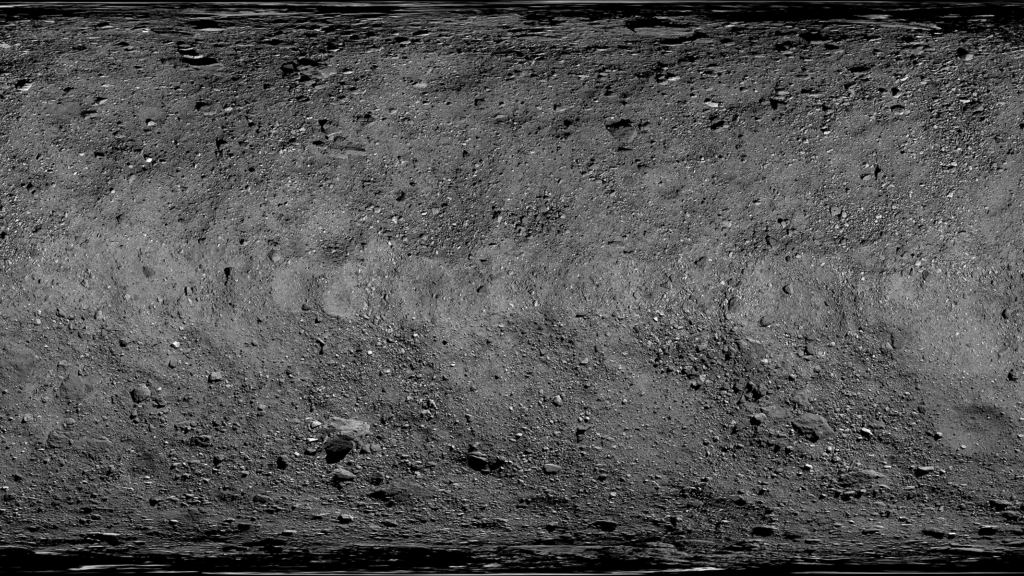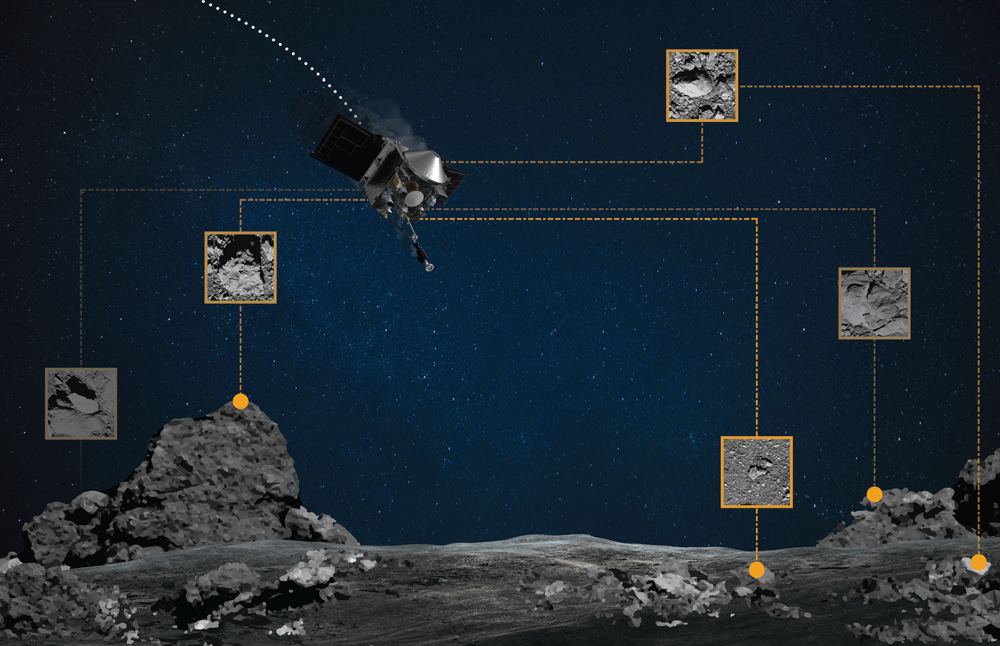NASA and the University of Arizona have released a stunning new global map of asteroid Bennu. At 2 inches (5 cm) per pixel, this is the highest-resolution global map of any planetary body. This hi-res map will help guide the OSIRIS-REx spacecraft to the surface of the asteroid to collect a sample, currently scheduled for late August 2020.
The OSIRIS-REx imaging team stitched together 2,155 images to produce this extremely detailed global mosaic of Bennu’s surface. If you’d like to play an “I Spy” game with this image, the OSIRIS-Rex twitter account is hosting a #WhereOnBennuIsThatBoulder challenge. They provide hints, and the challenge provides a fun way to get to know the surface of the spinning-top shaped asteroid.

You can view and explore larger versions of this image here (mosaic only) and here (mosaic with coordinate system).
The spacecraft collected these images at distances ranging from 1.9 to 3.1 miles (3.1 to 5 km) above the asteroid’s surface. The images were taken between March 7 and April 19, 2019. This detailed view of Bennu was used by the mission team during their selection of the primary and backup sample collection sites – Nightingale and Osprey.
As we mentioned previously, the surface of Bennu is proving to be much more treacherous than expected. For its small size — about one-third of a mile (half a kilometer) wide at its equator — Bennu has quite diverse terrain, including craters, ridges, and trenches. And all these regions seem to be blanketed by rocks and huge boulders. This is going to make collecting a sample from the surface much more challenging and the team has decided to change their original plans for how to perform the Touch-And-Go (TAG) sample collection event on Bennu.
As soon as OSIRIS-REx spacecraft arrived at asteroid Bennu in December 2018, its close-up images confirmed what mission planners had predicted nearly two decades before: Bennu is made of loose material weakly clumped together by gravity. But there were surprises, too. Scientists expected Bennu’s surface would consist of fine-grained material like a sandy beach. As you can see in viewing close up images, Bennu is a jumbled mess.

You can see flyovers of the four original candidate sample collection sites in the video below.
The sites are named Osprey, Kingfisher, Nightingale, and Sandpiper. Nightingale was chosen as the primary collection site, with Osprey as the backup site. The naming theme chosen for the OSIRIS-REx mission is “birds and bird-like creatures in mythology” and the four sites were given names of birds found in Egypt.
The spacecraft has been performing close flyovers of the primary and backup sites to gain even higher-resolution photos to prepare for the sample collection portion of the mission.
In late summer of this year, OSIRIS-REx will descend to the Nightingale site and collect a sample of pristine material from the origins of the solar system.

With the unexpected treacherous terrain, the method of tracking down to the surface had to be changed from using LIDAR (LIght Detection And Ranging) to Natural Feature Tracking. The big boulders themselves will help guide the spacecraft to the right spot on Bennu.
The spacecraft is scheduled to briefly touchdown in the attempt to extract surface samples. If the first attempt is unsuccessful, OSIRIS-Rex is equipped for multiple sample collection attempts. Once the mission is complete in 2021, OSIRIS-REx will head back home, bringing its valuable, pristine cargo to Earth in September 2023. If all goes as planned, the samples will be studied on Earth for decades to come.
Keep tabs on the OSIRIS-REx mission here at Universe Today, and at the mission website.

Excited about this one. One of the NASA projects I find truly unique.